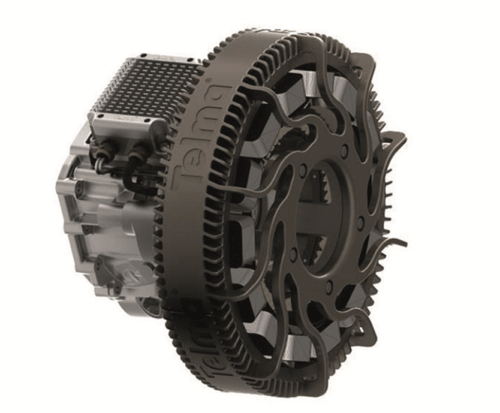Telma has produced friction-free braking systems based on the physical principle of electromagnetic induction for over 75 years. These braking systems do not emit fine particles and, by absorbing a large part of the braking energy, increase braking durability and reduce wear on service braking systems, lowering maintenance costs. Looking to the future, the company says it is constantly seeking solutions that can meet the increasing demands created by current and future environmental issues, and has now developed an entirely new system, the HIB (Hybrid Induction Brake). This is a complete hybrid solution which can be used on all vehicles over five tonnes, regardless of whether they use a combustion engine, hybrid driveline, or are fully electric or hydrogen powered. Telma explained that the system is self-powered and able to meet the vehicle’s drive, braking and electrical power needs. In addition to its operation as a retarder, the system offers an electric motor function which provides power support for combustion engines and a generator function which converts braking energy into electrical power for the vehicle’s auxiliary systems such as air-conditioning.
Telma says its HIB system is a response to environmental issues and contributes directly to reducing atmospheric pollution. “Thanks to technological progress and the increasingly strict European environmental standards, combustion engines are no longer the only sources of pollution receiving close attention; wear on brake systems is now known to be a significant contributor to fine particle emissions,” said Nicolas Quennet, Research Development Director at Telma.
Like other retarder systems, the HIB system reduces the environmental impact of the vehicle to which it is fitted by reducing the emission of fine particles during braking, but Temsa highlighted that in addition, the function as an electrical motor will reduce a combustion engine’s CO2 emissions, whilst as part of an electric vehicle driveline it can also increase vehicle range. “Its operation responds directly to increasing current and future vehicle energy demands,” added Nicolas.


